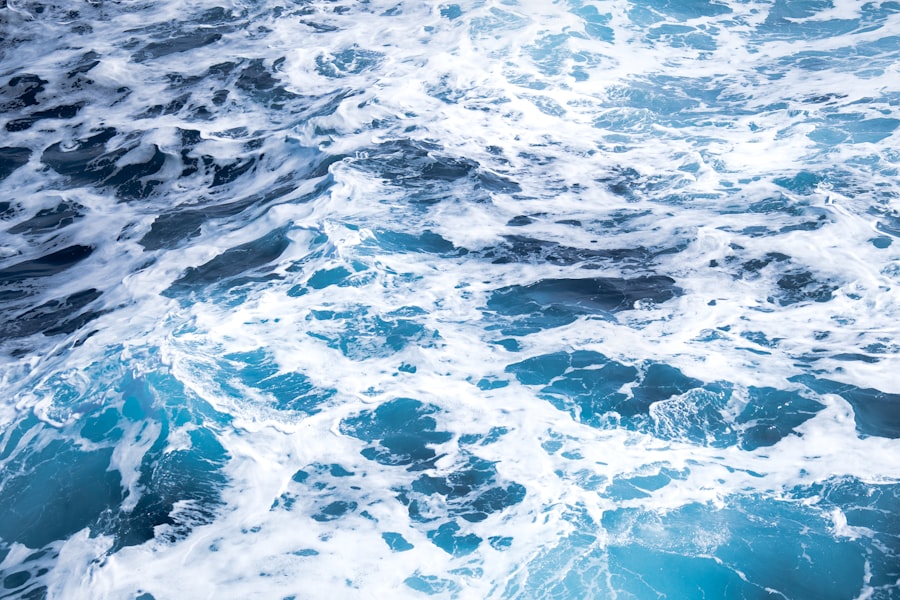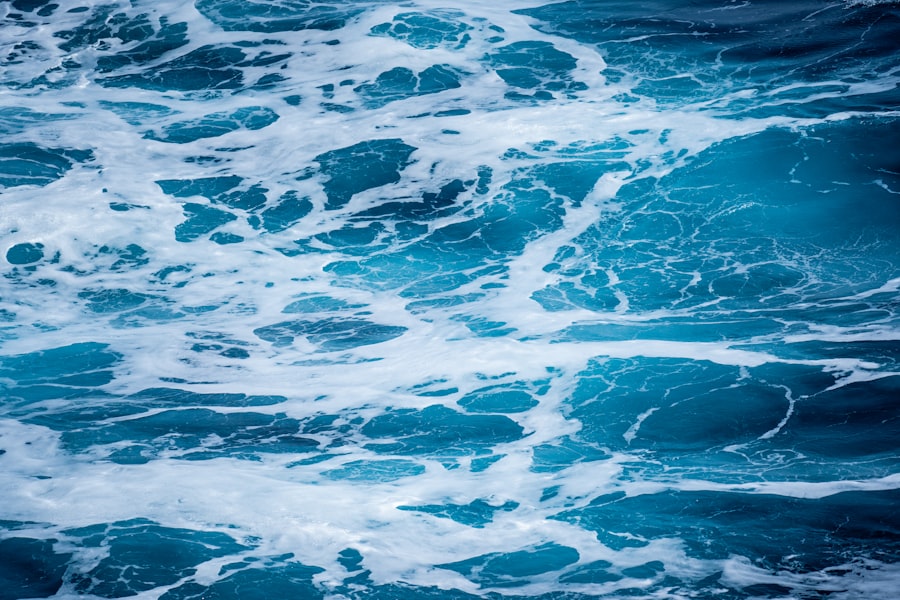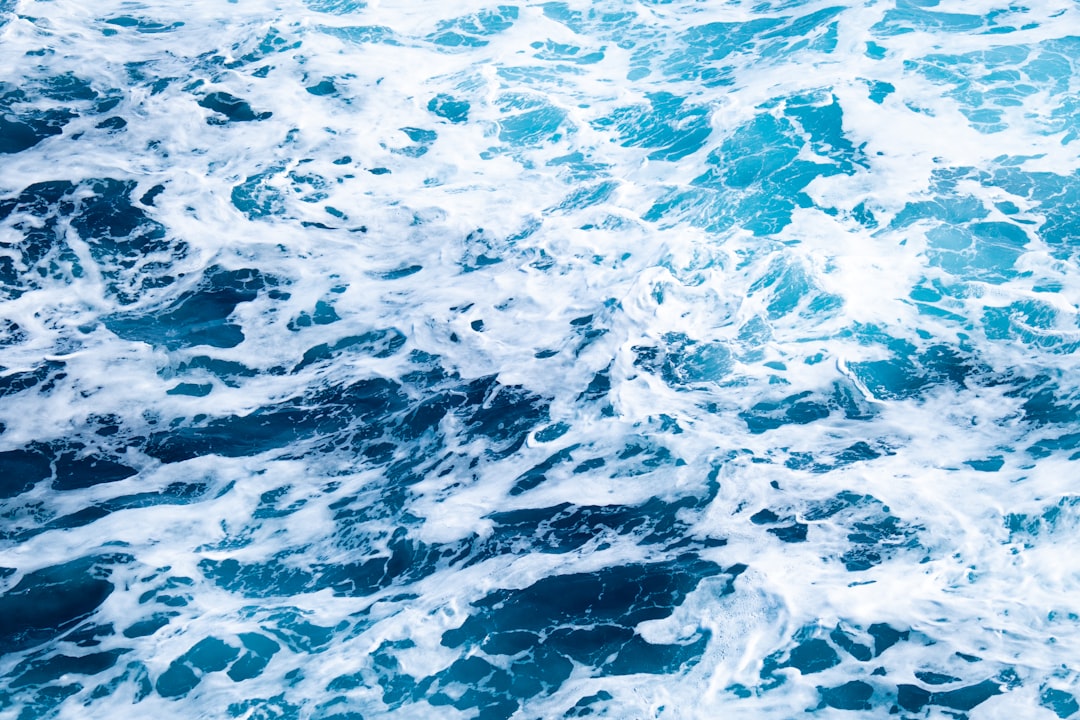The Drake Passage, a body of water situated between the southern tip of South America and Antarctica, is renowned for its tumultuous seas and significant role in global oceanic currents. This narrow stretch of ocean, measuring approximately 800 kilometers (500 miles) wide, serves as a critical conduit for the movement of water between the Atlantic and Pacific Oceans. Its strategic location not only makes it a vital area for maritime navigation but also a focal point for scientific research and ecological studies.
The passage is named after the English explorer Sir Francis Drake, who was the first to navigate these waters in the late 16th century, although it has been traversed by indigenous peoples long before his time. The Drake Passage is often characterized by its unpredictable weather patterns and rough seas, which can pose significant challenges to vessels attempting to cross it.
The unique geographical and climatic conditions of the Drake Passage have made it a subject of fascination for adventurers, scientists, and environmentalists alike, drawing attention to its importance in both historical and contemporary contexts.
Key Takeaways
- The Drake Passage is a body of water between South America’s Cape Horn and the South Shetland Islands of Antarctica, known for its challenging sailing conditions.
- The Drake Passage has a rich historical significance as it was first crossed by Sir Francis Drake in 1578, and has been a key route for explorers, traders, and scientists.
- The geographic features of the Drake Passage include strong winds, large waves, and the Antarctic Convergence, which is a meeting point of cold Antarctic waters and warmer sub-Antarctic waters.
- Crossing the Drake Passage presents challenges such as rough seas, unpredictable weather, and potential sea sickness, making it one of the most challenging maritime routes in the world.
- The Drake Passage is home to diverse wildlife and marine life, including penguins, seals, whales, and a variety of seabirds, making it a popular destination for wildlife enthusiasts and researchers.
Historical significance of the Drake Passage
Historically, the Drake Passage has played a pivotal role in maritime exploration and trade. In the late 1500s, Sir Francis Drake’s circumnavigation of the globe brought international attention to this treacherous waterway. His journey not only demonstrated the potential for global navigation but also highlighted the strategic importance of the passage as a shortcut between the Atlantic and Pacific Oceans.
This discovery paved the way for future explorers and traders who sought to capitalize on the rich resources of South America and beyond. The passage has also been a site of significant naval engagements throughout history. During the 19th century, it became a critical route for whalers and sealers who exploited the abundant marine life in Antarctic waters.
The discovery of gold in California in 1848 further increased traffic through the Drake Passage as ships sought faster routes to the West Coast. The historical significance of this waterway extends beyond exploration; it has been a vital artery for commerce and cultural exchange, shaping the economic landscape of nations bordering its shores.
Geographic features of the Drake Passage

The geographic features of the Drake Passage are as diverse as they are striking. The passage is flanked by the rugged terrain of Cape Horn to the north and the Antarctic Peninsula to the south, creating a dramatic contrast between land and sea. The underwater topography is equally fascinating, with deep-sea trenches and submerged mountain ranges that contribute to the complex hydrodynamics of the region.
These features influence ocean currents, which play a crucial role in regulating global climate patterns. One of the most notable geographic characteristics of the Drake Passage is its depth. The average depth is around 3,000 meters (9,800 feet), with some areas plunging even deeper into the abyssal plains.
This depth contributes to the passage’s notorious reputation for rough seas, as strong winds and currents can create formidable waves that challenge even the most seasoned mariners. The interplay between these geographic features and oceanic conditions makes the Drake Passage a unique environment that continues to intrigue scientists and explorers alike.
Challenges of crossing the Drake Passage
| Challenge | Description |
|---|---|
| Extreme Weather | The Drake Passage is known for its rough seas and strong winds, making it one of the most challenging maritime routes. |
| Seasickness | The rough waters of the Drake Passage can cause severe seasickness in passengers and crew members. |
| Isolation | Due to its remote location, crossing the Drake Passage can lead to a sense of isolation and limited access to help in case of emergencies. |
| Icebergs | During certain times of the year, icebergs can pose a significant threat to ships crossing the Drake Passage. |
Crossing the Drake Passage is often regarded as one of the most challenging maritime endeavors due to its unpredictable weather and turbulent waters. The convergence of cold Antarctic waters with warmer currents from the north creates a volatile environment where storms can develop rapidly. Sailors navigating this passage must be prepared for sudden changes in weather conditions, including high winds, heavy rain, and towering waves that can reach heights of up to 15 meters (50 feet).
Such conditions can make even experienced crews feel vulnerable. In addition to weather-related challenges, navigational hazards abound in the Drake Passage. Icebergs and sea ice pose significant risks to vessels, particularly during certain times of the year when they are more prevalent.
The presence of these ice formations requires careful planning and constant vigilance from ship captains and crews. Moreover, the remoteness of the passage means that assistance may be far away in case of emergencies, further complicating any attempts to traverse this formidable stretch of ocean.
Wildlife and marine life in the Drake Passage
The Drake Passage is not only known for its challenging conditions but also for its rich biodiversity. The waters are teeming with marine life, making it an essential habitat for various species. Among these are numerous species of whales, including humpback, minke, and orca whales, which migrate through these waters in search of food.
The passage serves as a critical feeding ground for these majestic creatures, particularly during the summer months when krill populations explode. In addition to whales, seabirds such as albatrosses and petrels are commonly seen soaring above the waves. These birds are well adapted to life in this harsh environment, often traveling vast distances in search of food.
The presence of such diverse wildlife highlights the ecological significance of the Drake Passage, drawing researchers and nature enthusiasts alike who seek to study and appreciate its unique ecosystems. The interplay between marine life and environmental conditions creates a dynamic habitat that is both fragile and vital to global biodiversity.
Weather conditions in the Drake Passage

The weather conditions in the Drake Passage are notoriously unpredictable, contributing to its reputation as one of the most challenging maritime routes in the world. The region experiences frequent storms due to its location at the convergence of several major ocean currents. These currents create a complex system that can lead to rapid changes in weather patterns, making it essential for sailors to remain vigilant and adaptable.
Temperatures in the Drake Passage can vary significantly depending on the season. During summer months, temperatures may hover around 5°C (41°F), while winter can bring frigid conditions with temperatures dropping well below freezing. Wind speeds can also be extreme, often exceeding 40 knots (46 mph) during storms.
These harsh weather conditions not only pose challenges for navigation but also impact marine life and ecosystems within the passage. Understanding these weather patterns is crucial for those who venture into this remote region.
Navigation and safety measures in the Drake Passage
Navigating the Drake Passage requires careful planning and adherence to safety protocols due to its challenging conditions. Modern technology has significantly improved navigation capabilities in this region, with advanced radar systems and GPS technology allowing vessels to chart their courses more accurately than ever before. However, despite these advancements, mariners must remain aware of their surroundings and be prepared for sudden changes in weather or sea conditions.
Safety measures are paramount when crossing this treacherous waterway. Vessels are often equipped with ice detection systems to identify potential hazards posed by icebergs or sea ice. Additionally, crews undergo extensive training to handle emergencies that may arise during their journey.
Communication with other vessels and monitoring weather forecasts are also critical components of safe navigation through the Drake Passage. By implementing these measures, mariners can mitigate risks associated with crossing this formidable stretch of ocean.
Research and scientific significance of the Drake Passage
The Drake Passage holds immense scientific significance due to its unique geographical features and diverse ecosystems. Researchers from around the world flock to this region to study its complex oceanographic processes, including currents, temperature variations, and nutrient distribution. The passage serves as a natural laboratory for understanding climate change’s impact on marine environments, making it an invaluable resource for scientists seeking to address pressing global issues.
In addition to oceanographic research, studies conducted in the Drake Passage contribute to our understanding of marine biology and ecology. The rich biodiversity found within these waters provides opportunities for researchers to explore species interactions, food webs, and ecosystem dynamics. As climate change continues to affect marine environments worldwide, ongoing research in this region will be crucial for developing effective conservation strategies and understanding how ecosystems adapt to changing conditions.
Tourism and expedition cruises in the Drake Passage
In recent years, tourism has become an increasingly important aspect of life around the Drake Passage. Expedition cruises attract adventure seekers eager to experience one of Earth’s last frontiers firsthand. These cruises often include stops at various points along Antarctica’s coastline, allowing passengers to witness breathtaking landscapes and encounter unique wildlife up close.
The allure of traversing this legendary passage adds an element of excitement for travelers seeking unforgettable experiences. However, tourism in this region must be managed carefully to minimize environmental impacts. Regulations have been established by organizations such as IAATO (International Association of Antarctica Tour Operators) to ensure that tourism activities are conducted responsibly and sustainably.
By promoting eco-friendly practices and limiting visitor numbers at sensitive sites, stakeholders aim to preserve the natural beauty and ecological integrity of the Drake Passage while still allowing people to explore its wonders.
Environmental concerns and conservation efforts in the Drake Passage
As interest in tourism and maritime activities grows in the Drake Passage, so too do concerns about environmental sustainability. The delicate ecosystems within this region face threats from climate change, pollution, overfishing, and increased human activity. Rising sea temperatures have been linked to shifts in marine species distributions, while plastic pollution poses risks to wildlife that inhabit these waters.
Conservation efforts are underway to address these challenges and protect the unique environment of the Drake Passage. Various organizations work collaboratively with governments and local communities to implement strategies aimed at preserving marine habitats and promoting sustainable practices among industries operating in or near these waters. Initiatives such as marine protected areas (MPAs) have been established to safeguard critical habitats from exploitation while fostering research opportunities that enhance understanding of this vital ecosystem.
Future developments and advancements in crossing the Drake Passage
Looking ahead, advancements in technology may further enhance safety and efficiency when crossing the Drake Passage. Innovations such as autonomous vessels equipped with advanced navigation systems could revolutionize maritime travel through this challenging waterway. These developments may allow for safer crossings while minimizing human error associated with navigation.
Additionally, ongoing research into climate change’s impact on ocean currents may provide valuable insights into future navigational challenges within the passage itself. As scientists continue to study this dynamic environment, their findings will inform best practices for safe navigation while ensuring that conservation efforts remain at the forefront of discussions surrounding human activity in this ecologically sensitive region. In conclusion, while crossing the Drake Passage presents numerous challenges due to its unpredictable weather patterns and treacherous waters, it remains an area rich with historical significance, biodiversity, and scientific intrigue.
As interest grows among tourists seeking adventure experiences alongside ongoing research efforts aimed at understanding climate change impacts on marine ecosystems within this region—stakeholders must prioritize sustainable practices that protect both natural resources and cultural heritage associated with one of Earth’s most remarkable maritime corridors.
The Drake Passage is renowned for its turbulent waters and is a critical maritime route connecting the Atlantic and Pacific Oceans. It is often considered one of the most challenging sea passages in the world due to its strong currents and unpredictable weather. For those interested in exploring more about the geographical significance and the adventurous spirit of navigating such waters, you might find this related article insightful. It delves into the unique challenges and the historical importance of the Drake Passage, offering a deeper understanding of why this region is so well-known among sailors and explorers.
WATCH NOW! Drake Passage: Earth’s Deadliest Waters Revealed
FAQs
What is the Drake Passage known for?
The Drake Passage is known for being a body of water located between the southern tip of South America and the northern tip of the Antarctic Peninsula. It is known for its notoriously rough and unpredictable seas, making it one of the most challenging and dangerous maritime routes in the world.
Why is the Drake Passage so rough?
The Drake Passage is so rough due to the convergence of the Atlantic, Pacific, and Southern oceans, which creates strong winds and powerful currents. The lack of any landmass to disrupt the winds also contributes to the rough conditions in the passage.
What is the significance of the Drake Passage?
The Drake Passage is significant because it serves as a major gateway for ocean currents and marine life between the Atlantic and Pacific Oceans. It also plays a crucial role in the global climate system by facilitating the exchange of cold Antarctic waters with warmer waters from the north.
What are the challenges of crossing the Drake Passage?
Crossing the Drake Passage presents numerous challenges, including extreme weather conditions, rough seas, and strong winds. These factors make it a difficult and potentially dangerous route for ships and other vessels.
What wildlife can be found in the Drake Passage?
The Drake Passage is home to a diverse range of marine wildlife, including various species of whales, seals, and seabirds. It is also known for its rich and abundant marine ecosystems, making it a popular destination for wildlife enthusiasts and researchers.
